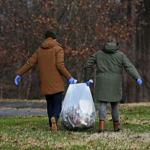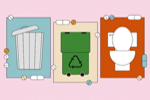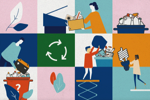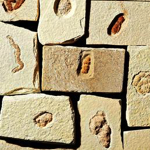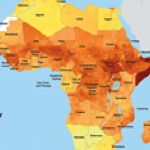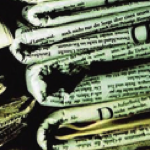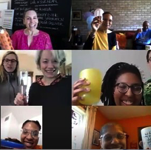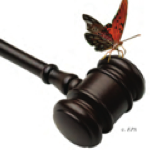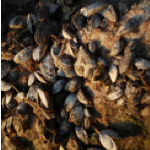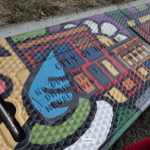Trajectory | August 2015 | PDF
Geospatial intelligence holds promise for understanding climate change through the lens of national security. From imaging and measuring the Earth to mapping environmental and human risks, GEOINT can provide increasingly accurate and timely information about a changing planet to yield better decision-making.

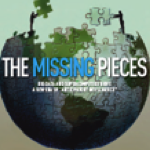
At Buffalo | Fall 2015
The visionary thinking of Erich Bloch revolutionized the computer industry and transformed the National Science Foundation. At 90, he is still chock full of ideas.
MACHINE LEARNING, BIG UNDERSTANDING
Trajectory | August 2016 | PDF
It wasn’t long ago that the phrase “big data” created a deafening buzz in the IC. Now, the focus has shifted—in a subtle but profound way—from collecting information to empowering it. How can we derive meaning from big data? How can we use big data to change outcomes? Today’s buzz is “big understanding.” For that to happen, we need intelligent machines.
Trajectory | February 2017
Precision agriculture applies technology to improve crop yields and reduce costs as well as provide early warning signs about food insecurity and regional conflict.
INSIDE FARGO, AMERICA'S MOST UNDERVALUED TECH HUB
Fortune.com | December 18, 2015
It gets 50 inches of snow a year and is so cold that its bikeshare system moves inside for the winter. But its homegrown tech community is on fire.
CYBER (IN)SECURITY: HOW BUSINESSES CAN TIGHTEN SECURITY
Georgetown Business | Spring 2015
Barely a week goes by without a headline about cybercrime. What should businesses be doing to tighten security.
Trajectory | October 2015 | PDF
The D.C. area’s concentration of government, academia and talent creates a unique advantage for startup innovators.
Trajectory | February 2015 | PDF
The advent of Big Data and supercomputing is driving a new era of “anticipatory intelligence,” but how will the application of these tools fit into the traditional intelligence community culture?
THESE WOMEN ARE TRAINING TO BE HACKERS. AND THEY DON'T NEED MEN TO DO IT.
Fortune.com | August 8, 2014
Step inside the Women’s Society of Cyberjutsu, a Washington, D.C.-area group for women to learn cyber security on their own terms.
IT SECURITY IS HEATING UP. ARE UNIVERSITIES PREPARED?
Fortune.com | March 26, 2014
The relatively new business of cybersecurity is booming. So where are all the smart kids going to learn about cool things like cryptography, forensics, wireless securty and embedded systems? Turns out, there are no shortage of options.
FOURTH ESTATE 2.0 PUTS INNOVATION ABOVE THE FOLD
SmartPlanet/CBS Interactive | April 7, 2013
Non-profit news organizations like the Texas Tribune develop new ways to tell a story and play watchdog, while tech gurus now share the bylines. Is the future of news already here?
WITH TECHNOLOGY, BRINGING THE ACL TEAR TO ITS KNEES
SmartPlanet/CBS Interactive | September 24, 2012
Experts in medicine and engineering are using new technology to learn why ACL tears, a devastating sports injury to the knee, occur -- as well as how to prevent them from happening.
IN LIFE-THREATENING MINES, A HIGH-TECH SAFETY NET
SmartPlanet/CBS Interactive | April 16, 2012
In the dangerous and dirty world of mining, technology is creating new ways to dig -- and keep miners safe.
Trajectory | August 2019
In the days following Cyclone Idai in Mozambique this past spring, no amount of geospatial intelligence was as memorable to U.S. Air Force Lt. Col. Leonardo Tongko as a photo he saw of a mother feeding her child the food his units had just packaged and delivered.
IN LIEU OF TRIPS, FRIENDS AND FAMLIY ARE TRAVELING VIRTUALLY
The Washington Post | April 19, 2020 | PDF
Voyagers and vacationers had barely finished canceling their trips early this spring when the same travelers swiftly embraced a pandemic proxy: the online reunion.
RULES OF THE ROAD TRIP: KEEP DATA USE DOWN, POWER LEVEL UP
The Washington Post | July 19, 2020 | PDF
To prepare for a road trip last month, I packed a couple coolers of meals, camping gear and what seemed to be a silo of dog food. Figuring out how to keep all the devices charged without access to traditional power sources was trickier.
Trajectory | September 1, 2020 | PDF
It was just a decade ago when the Census Bureau printed 17 million maps and deployed 600,000 census-takers who lugged around satchels weighted down with paper documents. Each morning, the enumerators met in-person with a supervisor to learn their day’s route, and they tracked their cases, hours, miles and expenses on paper. Since the 2010 Census, technology has exploded.
National Parks | Fall, 2012 | PDF
What on Earth does farming have to do with the Chesapeake Bay? As it turns out, everything.
GLOBE-TROTTING HITCHHIKERS: INVASIVE SPECIES ASSAULT U.S. WATERS
SmartPlanet/CBS Interactive | March 12, 2012
Non-native organisms create economic, ecological and social problems in the United States. Will new regulations, scientific findings and innotive solutions win the all-out war against these border-crossers?
MAKING A CASE FOR THE ENVIRONMENT
Georgetown Law | Spring/Summer 2007
Interest in environmental law ebbs and flows, depending on environmental issues of the day, recent legislation and the political party of the current administration. But recently, the faculty has noticed a surge of interest that resembles that of the 1980s.
FALL HOME & GARDEN REPORT: SAVE ENERGY. SAVE THE PLANET
USA Weekend | September 3, 2006
This family's "green" home shows that you can mix responsibility with occasional perks.
SAVING THE PLANET ONE POND AT A TIME, ONE FROG AT A TIME
Georgetown University Law Center| Fall, 2018
Lauren Phillips was dreaming about the dusky gopher frog. Which wasn’t surprising, because nearly every waking moment, the second year law student was researching, contemplating, discussing or writing about the warty, dark-colored, lime-sized amphibian. This fall, she took a stab at writing a portion of an amicus brief for a case centered around the frog’s habitat that was heard by the U.S. Supreme Court.
RALEIGH GETS CREATIVE WITH ITS ANTI-WATER POLLUTION CAMPAIGN
U.S. News & World Report| June 11, 2019
The connection between storm drains and the health of local waterways is becoming clearer as cities across the country call attention to the drains with murals and signage to reduce water pollution and educate residents about the harms of using them as trash receptacles. In Raleigh, vibrant murals remind residents, "Only rain down the drain."


